Genealogy research can sometimes become just a list of dates; which I don't think is very interesting. I'm sure most of us want to know much more about the people on our family trees. Personally, I'm very interested in what my ancestors did to earn a living. Their working lives often explain why they lived where they did, what sort of life they lived and the opportunities that they could give to their children.

Sausage Room at Denny's Factory, Waterford, Ireland. National Library of Ireland ref. POOLEWP4245
This article looks at sources for finding occupational details so that a picture can be built up of our ancestors working lives. I'm using British and Irish sources as examples, but similar records should exist in other countries.
Census Records
Census returns are probably the most obvious records to look at when searching for occupations. However they do have limitations; often the breadwinner is just recorded as "Laborer" or "Agricultural Laborer" in rural areas. The occupations of wives are often not recorded, even if they were earning an income in the home. Often women had jobs that were not recorded like lace making, cleaning clothes or even running a small shop.
Information recorded improved in later years and by the 1911 British census, job titles tended to be more specific in many cases and even the industry worked in is recorded. When the 1921 British census is released (in 2022) there will be even more detail including the employer's name and place of work.
Although not strictly a census, the 1939 Register is very census like. It was undertaken on the eve of the Second World War so that the Government could determine who was available for the armed services and other war work and also to issue identity cards. Many job titles are very specific which can help in understanding where someone worked. If they had other part time jobs for the government such as air raid warden or special constable, these are also recorded.
For more on this see The Complete Guide to the British Census.
Civil Registration
Civil birth, marriage and death records are a useful source for occupations for at least the men. Birth certificates usually record the occupation of the father. Marriage records list job titles for both parties as well as for their fathers. Again women's jobs are often not recorded, especially in the early years of civil registration. Death records also record occupations.
When building up a picture of someone's working life, don't forget to extract occupational details from the birth and marriage records of the children.
See How to find English and Welsh Vital Records for more
Parish Records
Early parish records didn't usually record a person's occupation, although sometimes you will find that a minister has recorded an occupation on a baptism (father) or a marriage (groom). In England and Wales, jobs were recorded after the introduction of printed registers for baptisms and burials from 1812 and marriages from 1837 (which coincided with the introduction of civil registration).
For more on these records see A Guide to British Parish Registers
Newspapers
Newspapers can be a rich source of occupational information. Death notices and obituaries often mention a person's job. Look out for court cases too, as occupations are usually listed. This is often true for the witnesses as well as the accused. You may also find snippets of local news that may even mention where someone works.
See Online British Newspapers and Find Your Irish Ancestors with Online Newspapers for more on this valuable resource.
Directories
Historical directories first appeared in the 17th century. Initially, they just listed the local officials and members of the gentry, but later expanded to include businesses and small traders. By the 19th century, these historical directories were listing residents in many streets. They can be a very useful source for occupational information.
See: Use Historical Directories to find your Ancestors
Other useful records for finding occupations
- Wills
- Travel and Immigration Records
- Military Records
Putting it all together
By extracting occupational details from all of the records relating to a person, including their children, you can build up a picture of a working life. You can include the information on your online or off-line tree, or on a Word or Excel file. Here is an example from my own tree. This is my relative, Edward McGowan:
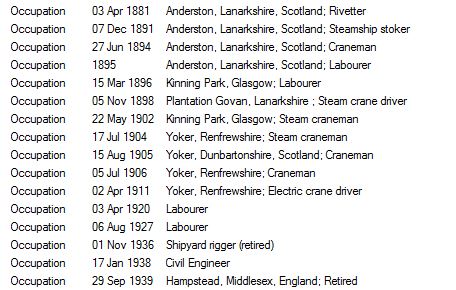
Edward McGowan's Working Life.
As you can see, for most of his career he was listed as a craneman or crane driver. The 1911 census is interesting as he is an electric crane driver and his industry is listed as boilermaking. At the time, he and his family were living in Yoker, Scotland. Looking at a large scale local Ordnance Survey map I discovered that his tenement was next door to the Yoker ferry that crossed the River Clyde to Renfrew. A few minutes walk from the ferry on the Renfrew side I can see on the map the factory of Babcock & Wilcox, boiler makers. Researching this company, I discovered that they had an electric crane department:
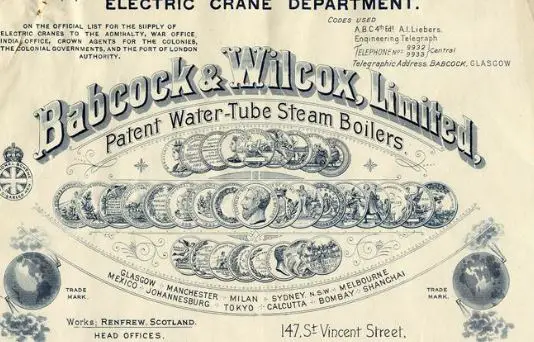
I'll bet that this was where Edward was working when the family lived in Yoker. The next step is to see if the local archives have employment records for Babcock's and whether I can find Edward on them.
By listing someone's employment history like this, you can also see if something doesn't look right. In Edward's case the entry for 17 January 1938 is suspect. He's not a craneman here, but a civil engineer. This fact came from the marriage record of one of his sons. It looks like he did it to impress his new middle class in-laws. A bit of social climbing was going on here.
Useful websites for occupations
Finally here are some useful websites for British occupations:
- Scottish Mining Website
- Grace's Guide. See this post for more about using this great free resource
- Crewe Railway Works Database
- Obscure Old English Census Occupations
- Romany and Traveller History Society (including fairground folk)
- Irish Mariners
- The Blacksmiths Index
- Mills Archive
Happy researching!
Please pin a pin to Pinterest:

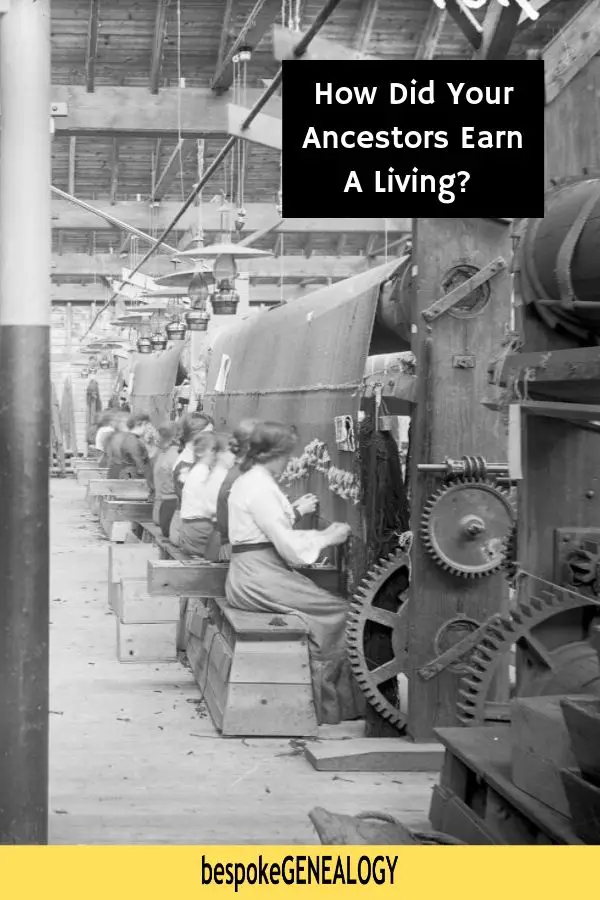
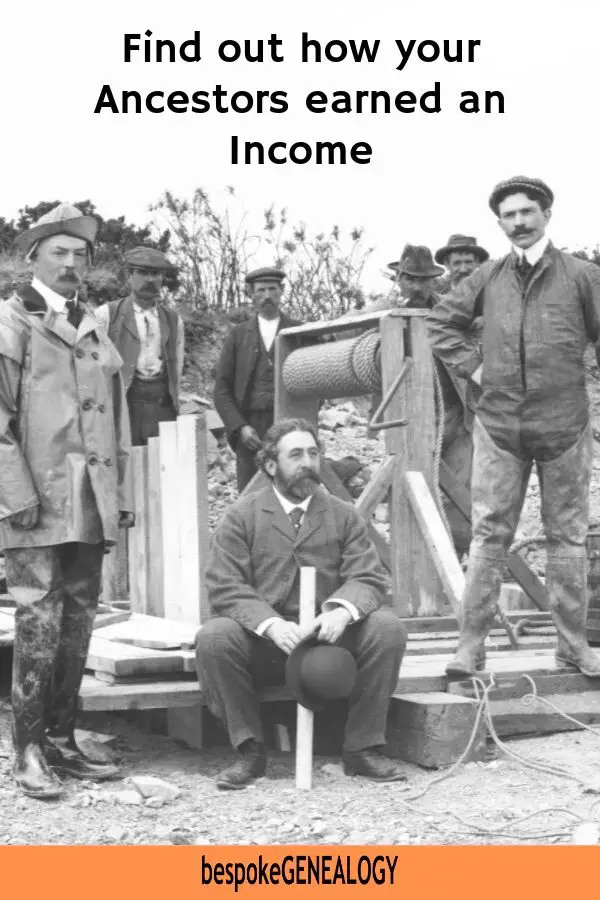
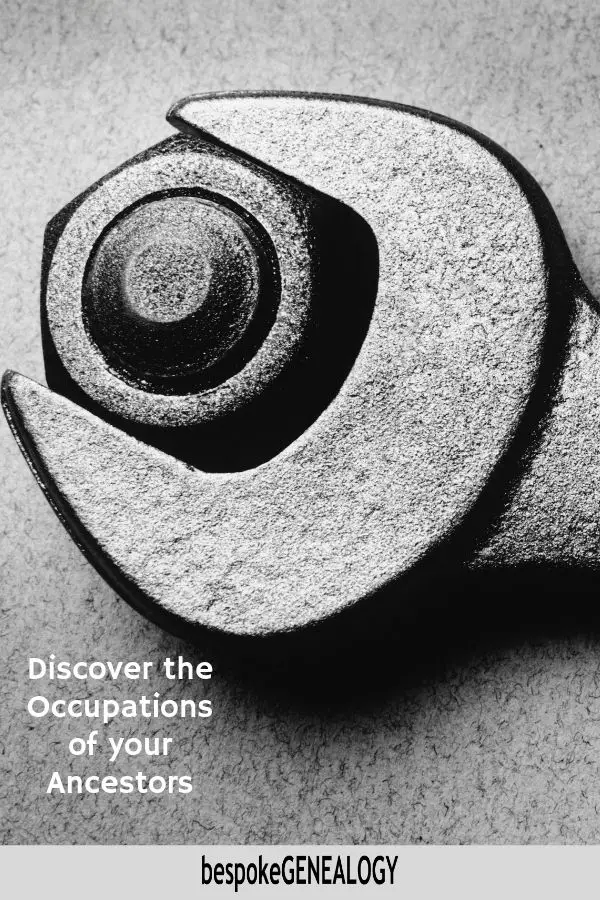
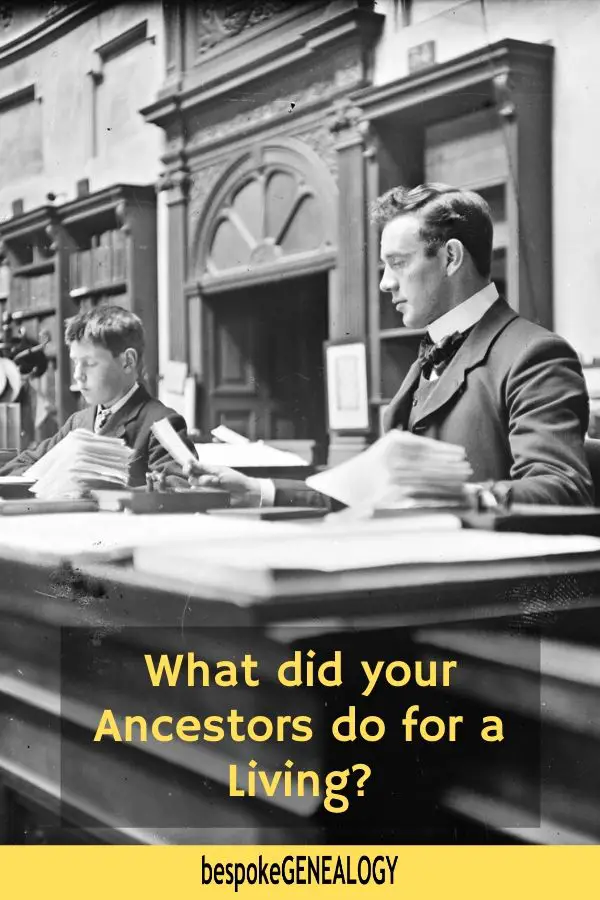
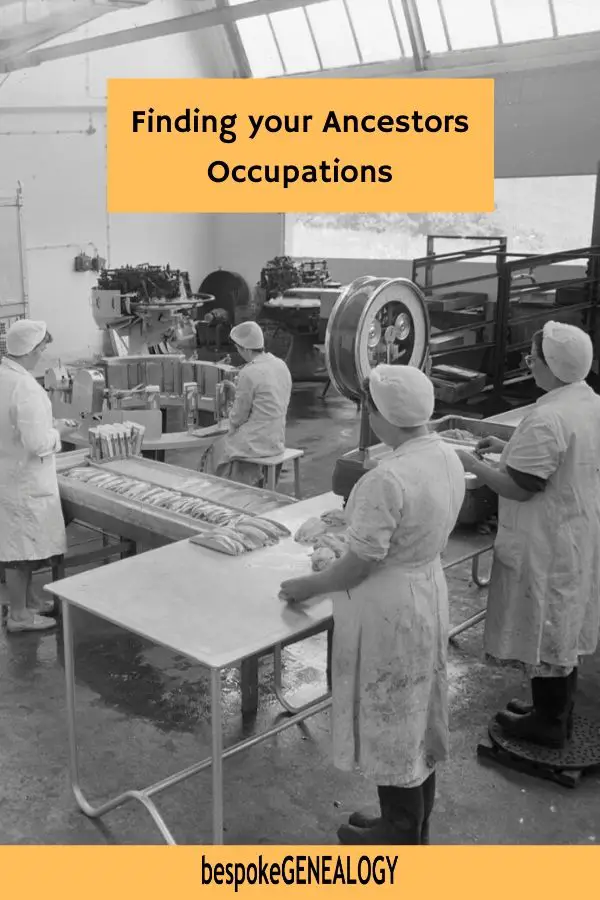
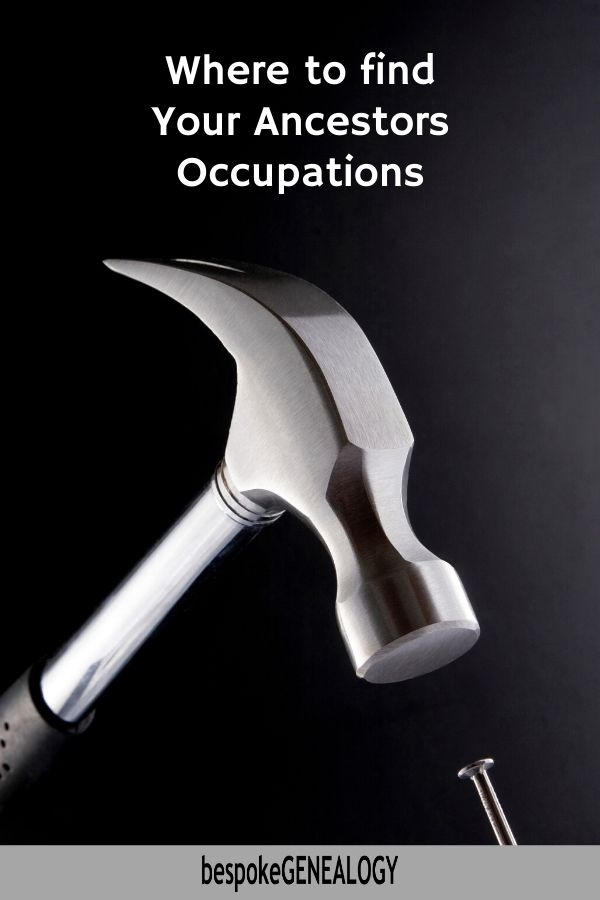
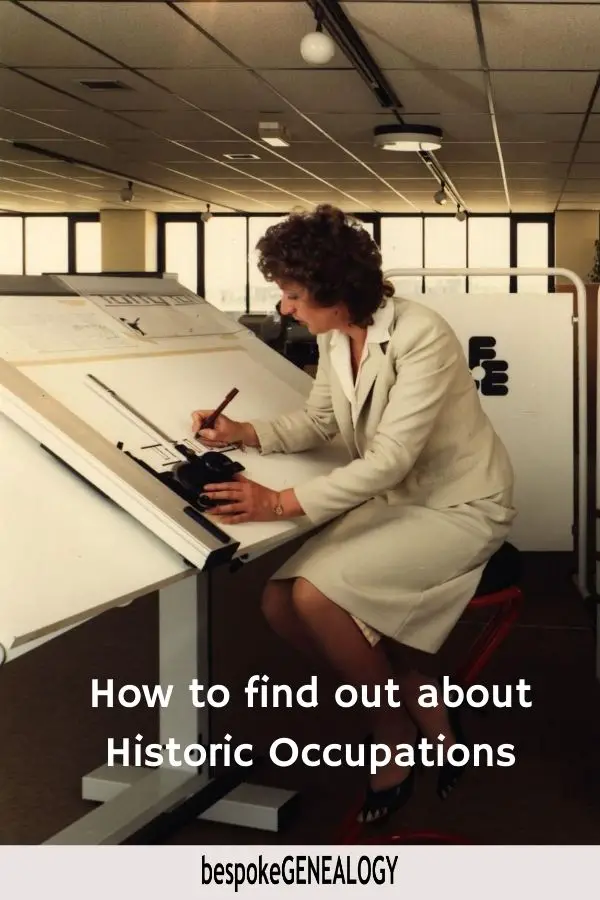
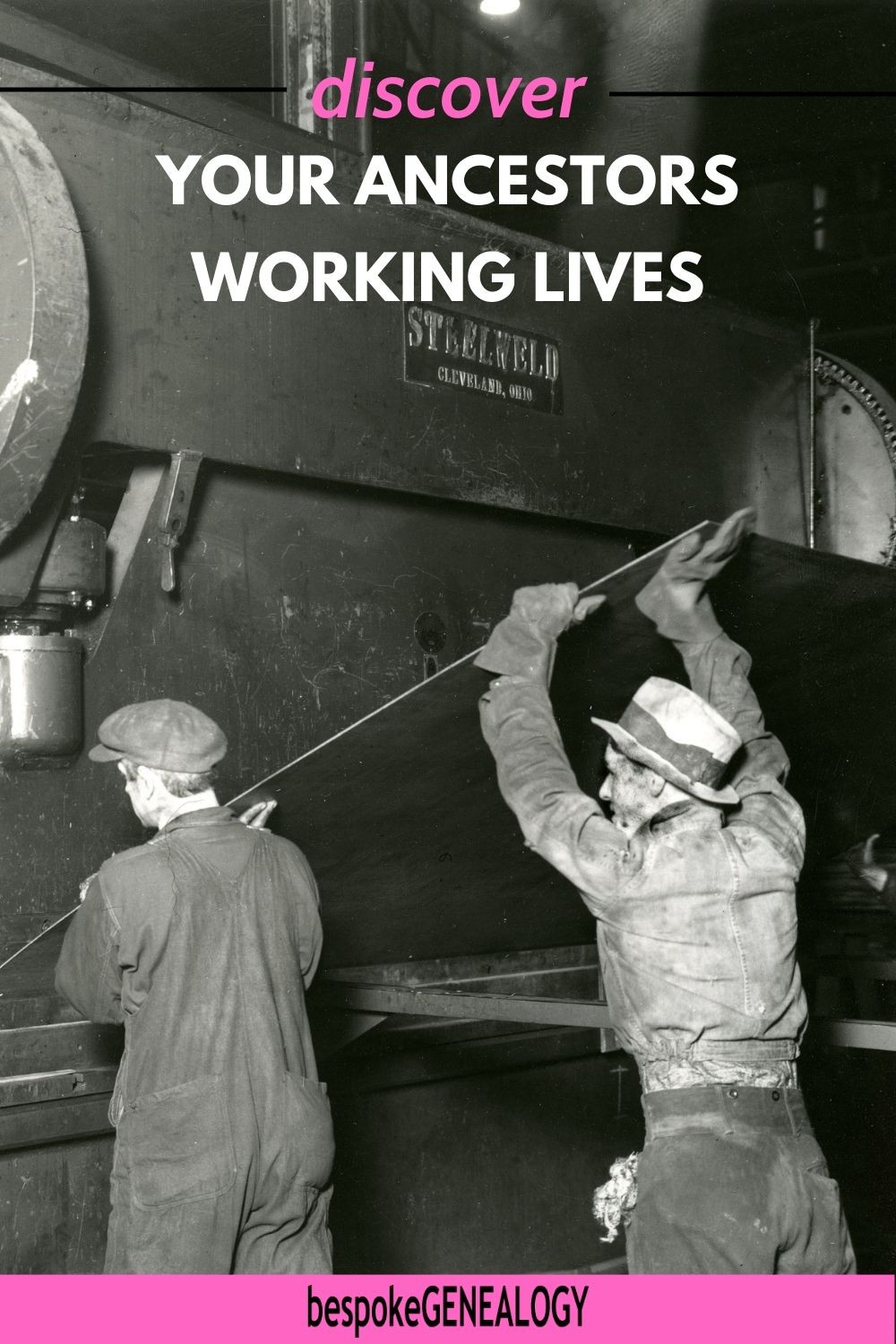
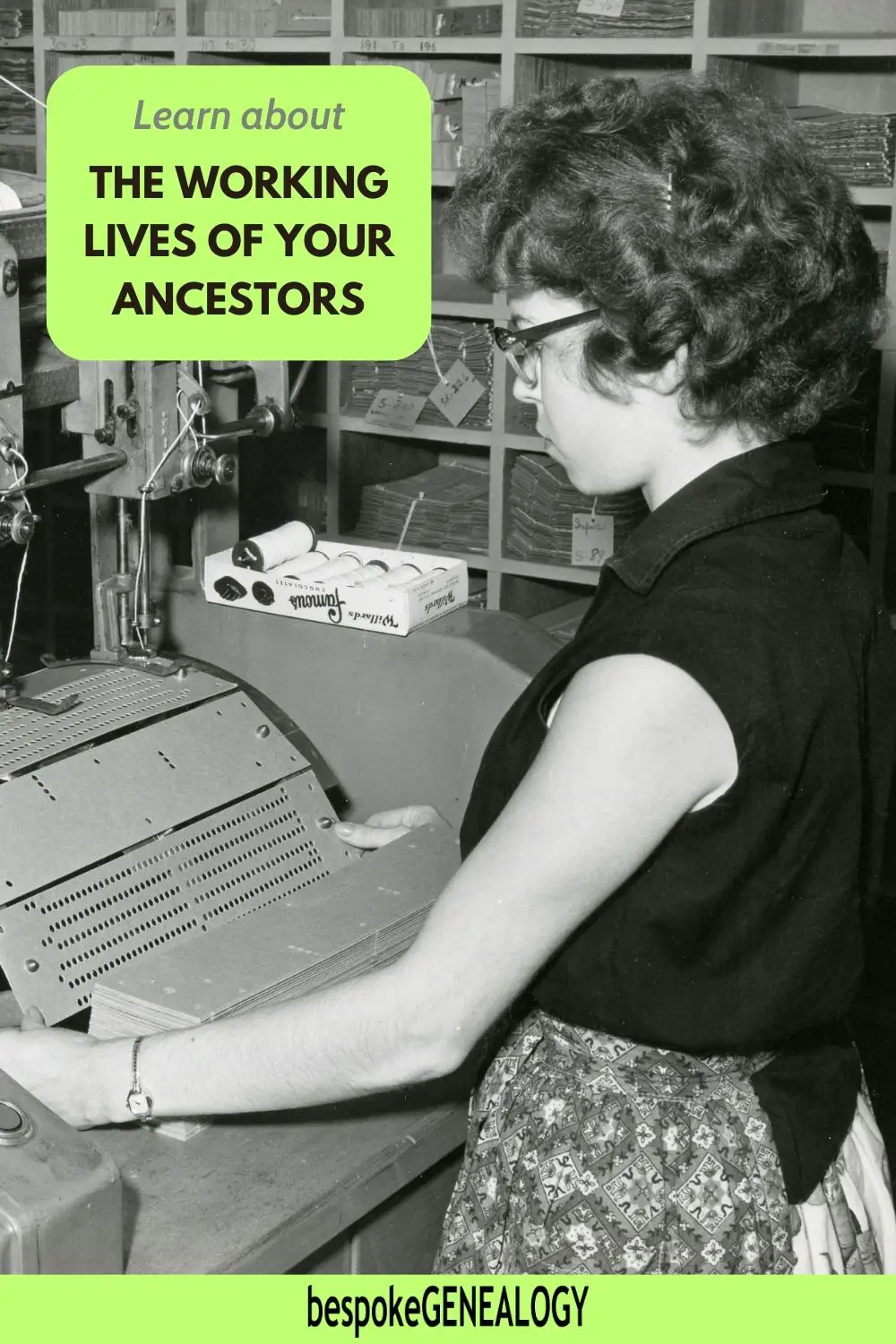

Leave A Comment